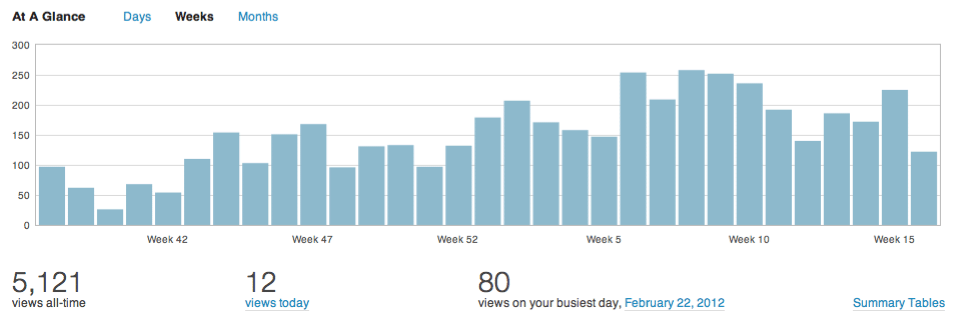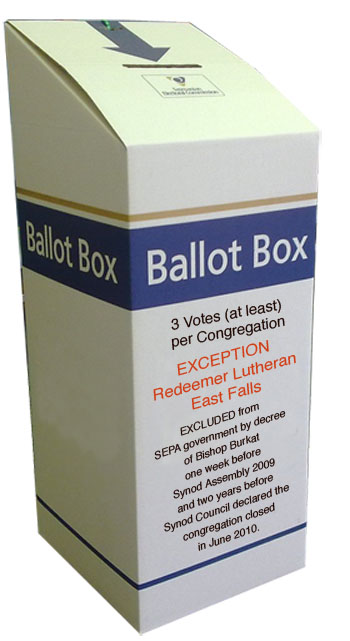
Redeemer's right to be represented at SEPA Synod Assembly was removed by decree of Bishop Burkat before 2009 Synod Assembly one week before the 2009 Assembly — before there was ever a hearing or vote of Synod Assembly. Redeemer appealed this decision but Synod Assembly did not vote on it. In fact, Synod Council didn't vote on this until June 2010. Constitutionally, Redeemer should have had a right to challenge that 2010 decision. Redeemer should have had voting privileges in 2009 and 2010. Redeemer never voted to close. There is no requirement for congregations to own buildings. Redeemer remains faithful in worship and mission. Since the only aspect of our appeal addressed by Synod Assembly was our property, Redeemer still has voting rights under SEPA's constitution.
Today is election day in Pennsylvania. We are expected to go to the polls as informed citizens to make wise decisions. Most of what we have heard for the last six months is what’s bad about the other guy.
Mud-raking in American politics is an old tradition. The best mud-raker wins. And so, one quality every presidential candidate must have is the ability to tear the figurative limbs from opponents.
Successful mud-raking gets leaders their way.
But there is a cost. The cost is to the spirit of the people, who go to the polls weary and uncertain that they are voting for the most capable leader . . . or the best-funded, best-organized critic.
Politics is part of American life. It’s also part of the Protestant Church. We elect our leaders. Unfortunately, our leaders have learned lessons from secular politicians. You can gain support by tearing down your opponents.
We don’t have campaigns between “hopefuls” so it is a field day for those in power. Opponents in the church can be anyone who challenges the status quo.
The techniques are more subtle in church politics. In the ELCA, each bishop has six years to plant innuendo, to ignore opponents’ good ideas, to neglect some churches and curry favor in others, to charismatically rally support. Every action is supported by well-chosen Scripture.
Who are the opponents? In the Southeastern Pennsylvania Synod of the Evangelical Lutheran Church in America, it can be the very churches who provide support — but not enough support in the leaders’ eyes. It can be clergy who speak against policy or who simply advocate for new policy. It can even be the congregational members who volunteer with no expectation of power, or recognition, monetary or otherwise. It can be congregations who have small memberships but more assets than SEPA.
Looking for faults becomes a habit. Finding faults (an easy job) can have rewards when powers (constitutional or not) are exerted.
American politics is wearying. Church politics is self-defeating.
Church politics are supposed to model servant leadership—also true of public servants — but in the Church we have the life of Christ as guide. In the Lutheran Church, the constitutions assign equality to each entity. There really is no power to wield. We are supposed to be partners in ministry.
Violating the intent of the constitutions makes immediate winners/losers—a situation which is unChristian. In the end the whole Church suffers. It takes awhile, but the erosion of spirit over a decade becomes obvious.
The Church relies on knowledgeable people doing the right thing. Abdication of that role leads to abuses of power.
And yet, in the Lutheran Church it is not uncommon to hear the best educated church leaders justify non-participation with “we elected the leaders; we have to support them.” This is nonsense—an abdication of responsibility. You don’t have to support a leader who is making bad decisions.
This is also an election year for SEPA. What kind of leader will you elect? One who finds fault with the congregations served and their volunteer members who dare to disagree? Or one who builds on their strengths and nurtures them in faithful service to God and His people?






